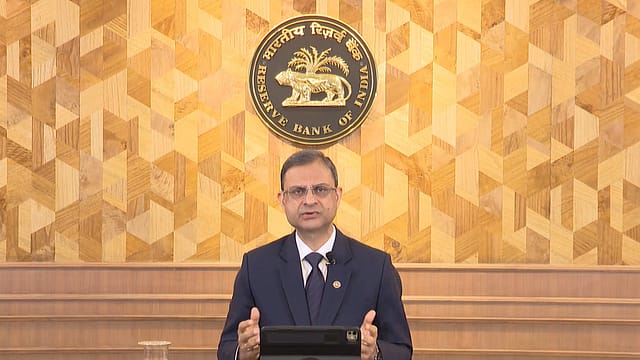As rupee pressure eases, RBI trims forward dollar short to $65.2 billion in May, shows monthly bulletin
ADVERTISEMENT

The Reserve Bank of India’s (RBI) outstanding net short position in the forward book continued to decline to $65.2 billion by May-end amid easing pressure on the rupee, according to the central bank’s monthly bulletin. The outstanding net short positions in February, March, and April were at $88.7 billion, $84.3 billion, and $72.5 billion, respectively.
"Over the past year, RBI adopted one of its most aggressive derivative-based interventions to contain rupee volatility: building up a record net short forward position of $88.7 billion by February. This strategy allowed the central bank to support the rupee without drawing down heavily on spot reserves, effectively shielding its headline reserve position,” said Amit Pabari, MD of Cr Forex.
However, recent months have seen a clear shift in stance. “The outstanding short position has steadily declined—from $88.7 billion in February to $65.2 billion by May-end, marking a calibrated unwinding," he added.
December 2025
The annual Fortune 500 India list, the definitive compendium of corporate performance, is out. This year, the cumulative revenue of the Fortune 500 India companies has breached $2 trillion for the first time. Plus, find out which are the Best B-schools in India.
Currently, RBI’s total reserves are around $700 billion, out of which around $580 billion is in foreign currency assets, primarily in dollars, euros, pounds, and a few others. If 80% of that is in dollars, it becomes about $470 billion in USD reserves. Comparing this to a $65.2 billion forward-sell position, it translates to a roughly 13.8% short exposure on the dollar. This is not a small amount, but less than that of the previous April, when there was a 15% short exposure on the dollar, which was $72.5 billion.
Several macroeconomic developments have supported this shift in strategy. Despite a sharp 12% drop in the Dollar Index over the past seven months, driven by tariff shocks, geopolitical tensions, U.S. debt concerns, and broader de-dollarisation efforts, the rupee remained largely range-bound. "This signals where RBI had begun unwinding its forward positions amid easing external pressures,” Pabari said.
Softer global energy prices have reduced India’s import bill.
"Reducing short forward positions trims future dollar obligations, making the reserve base more transparent and robust while restoring balance sheet flexibility, allowing RBI to intervene only when volatility demands, not to defend fixed levels," Pabari explained.
This trend of gradual unwinding is likely to continue in the near term, as RBI appears more comfortable with the rupee’s movements, he added. “With less reliance on forward market defences, the central bank may allow the rupee to move more in line with market fundamentals. As a result, any sharp appreciation is likely to be capped, with the overall bias shifting slightly towards mild depreciation in the coming months.”
